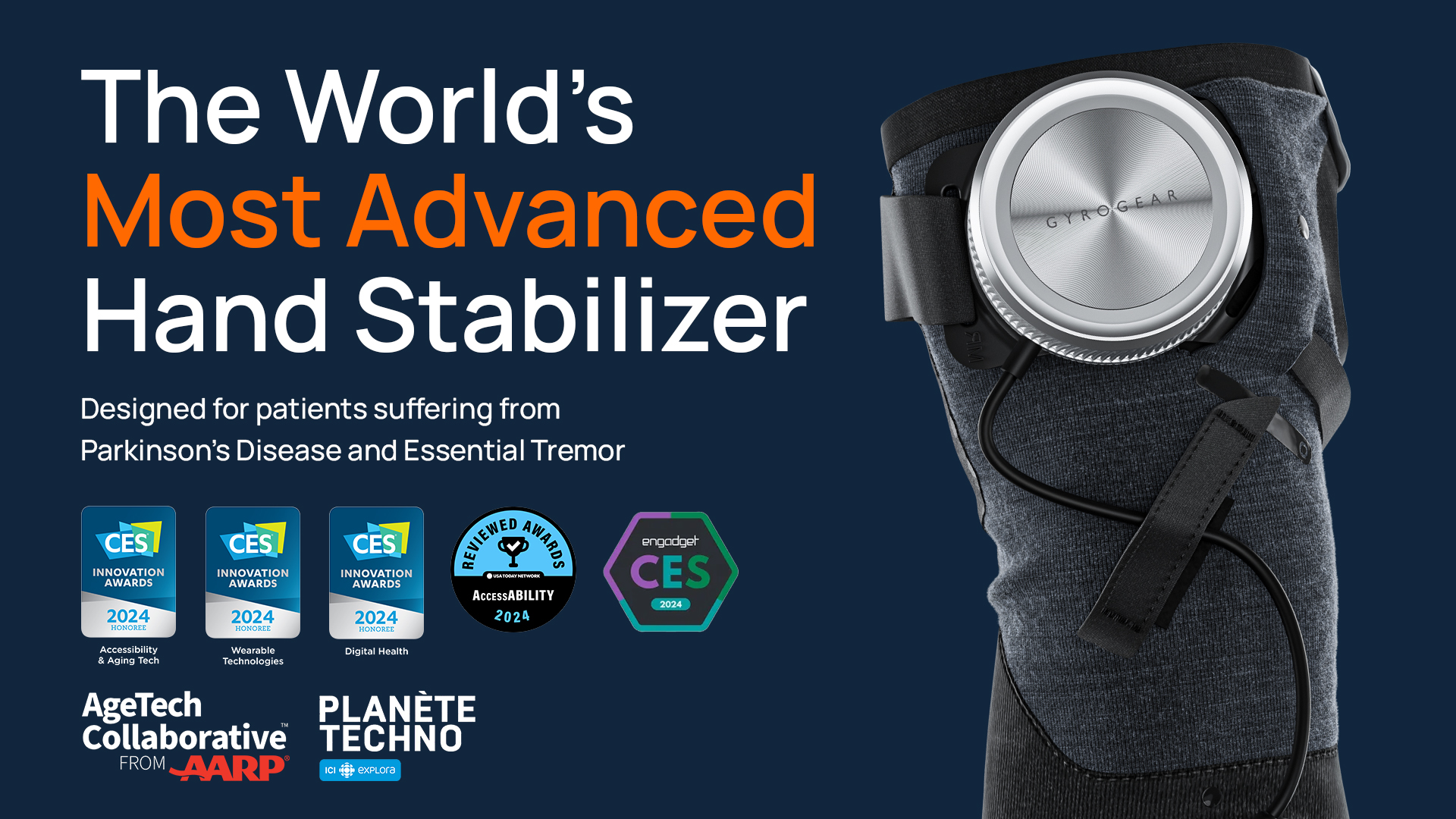
The GyroGear journey started in 2014 when Dr. Faii Ong, a medical trainee at the time, was part of a team caring for a 103-year-old woman in a London hospital. Perplexed by the woman’s significant weight loss and growing frailty, Dr. Ong discovered the cause while observing her at lunch. Tremors caused most of her soup to spill onto her bed covers and hospital gown.
After spending half an hour cleaning her up, Dr. Ong inquired with the nurses about possible solutions. Their response was disheartening: “Well, she’s a hundred and three, forgets you in five minutes, has those really bad shakes, and her medications have stopped working. There’s nothing we can do.”
Undeterred, Dr. Ong was determined to find a solution, leading him to establish GyroGear in early 2015.
GyroGlove™ is the world’s first mechanical gyroscope medical device designed to tackle the underlying issue of essential tremor.
GyroGlove™ utilizes cutting-edge gyroscopic stabilization technology to counteract hand tremors, offering restored control and immediate relief for up to 200 million individuals worldwide affected by Parkinson’s disease and Essential Tremor.
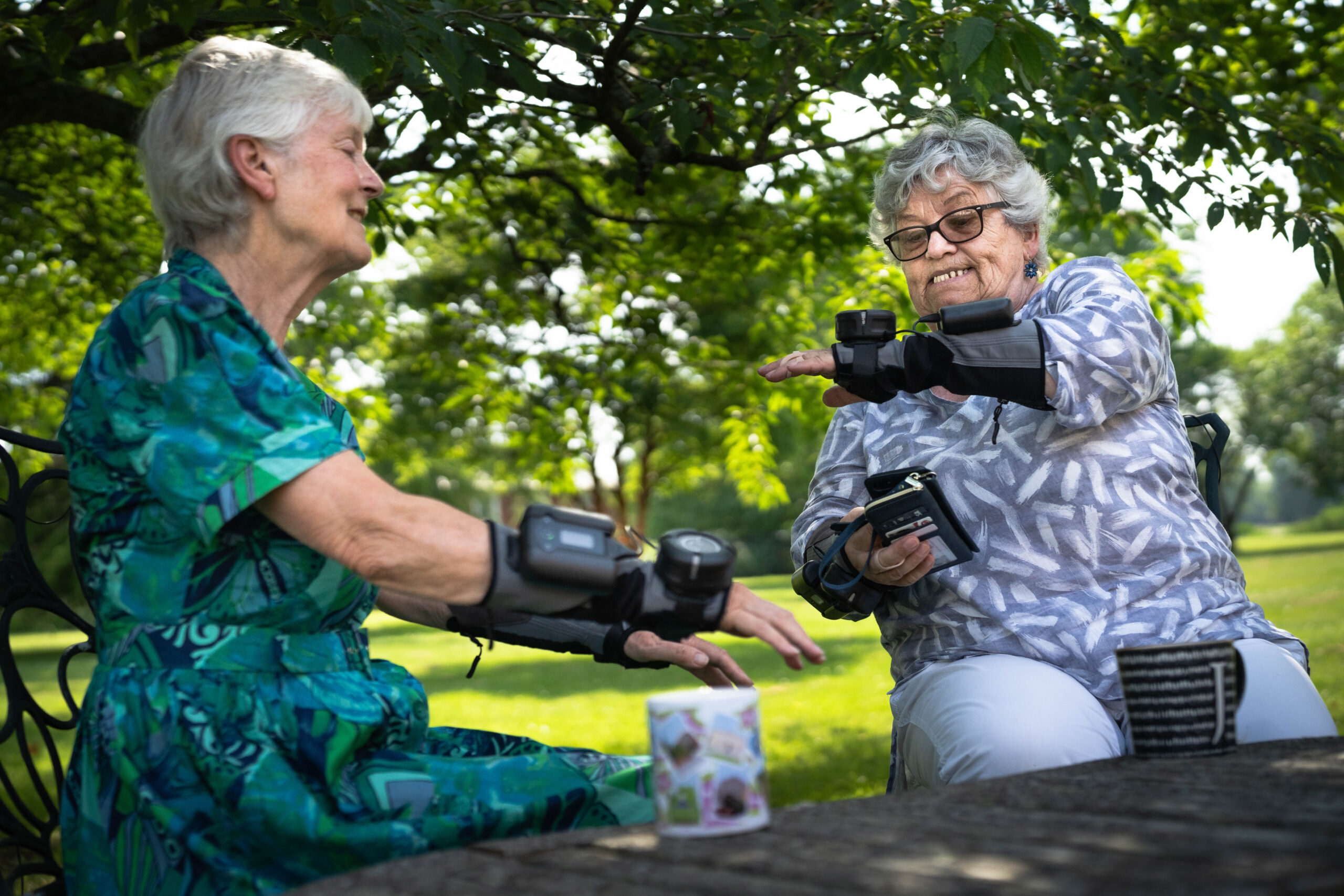
There is currently no cure for essential tremor and Parkinson’s disease, a degenerative neurological condition that affects millions of people worldwide. The condition manifests itself mostly through tremors that can cause patients’ hands to shake so much that everyday tasks such as eating and drinking become difficult or impossible.
In addition to the physical challenges, many individuals with tremors experience stigma and silent anguish. The condition not only hinders their ability to carry out daily tasks but, more notably, inflicts mental distress due to the embarrassment caused by uncontrollable shaking. As a result, they distance themselves from social engagements and steer clear of public spaces.
Medication is often not effective, has considerable side-effects, and loses efficacy over time. That’s why we created the GyroGlove™, a groundbreaking wearable medical device that employs the laws of physics, rather than chemistry, to mechanically stabilize a patient’s hand and control tremors.
The GyroGlove™, is the world’s first and only wearable medical device that adopts cutting edge aerospace technology and satellite-grade mechanical gyroscopes. The technology effectively and swiftly counteracts hand tremors, thus restoring normal use of the hand. The lightweight GyroGlove™ not only instills hope in those afflicted by Parkinson’s Disease but also extends its benefits to the hundreds of millions suffering from Essential Tremors.
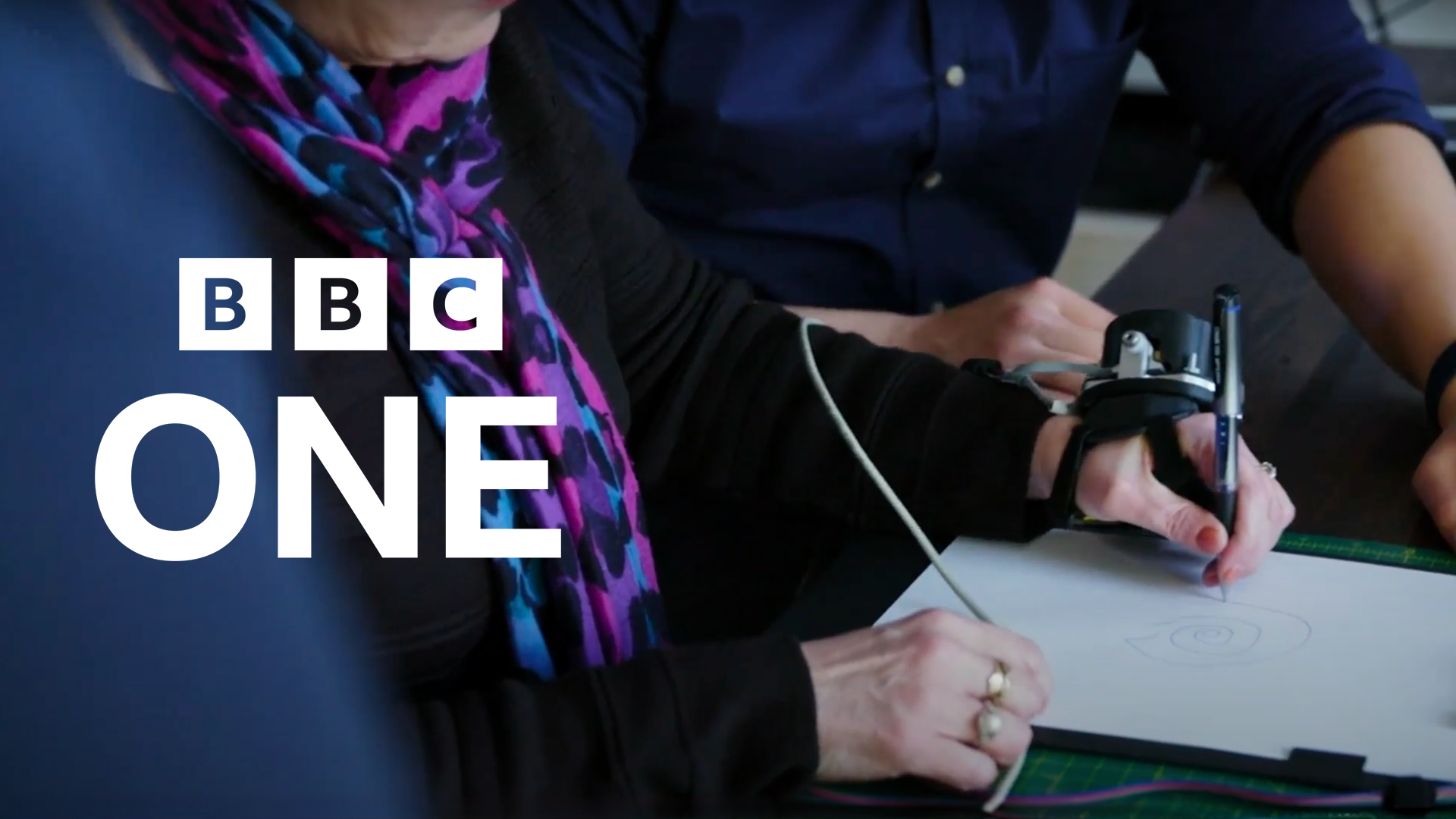

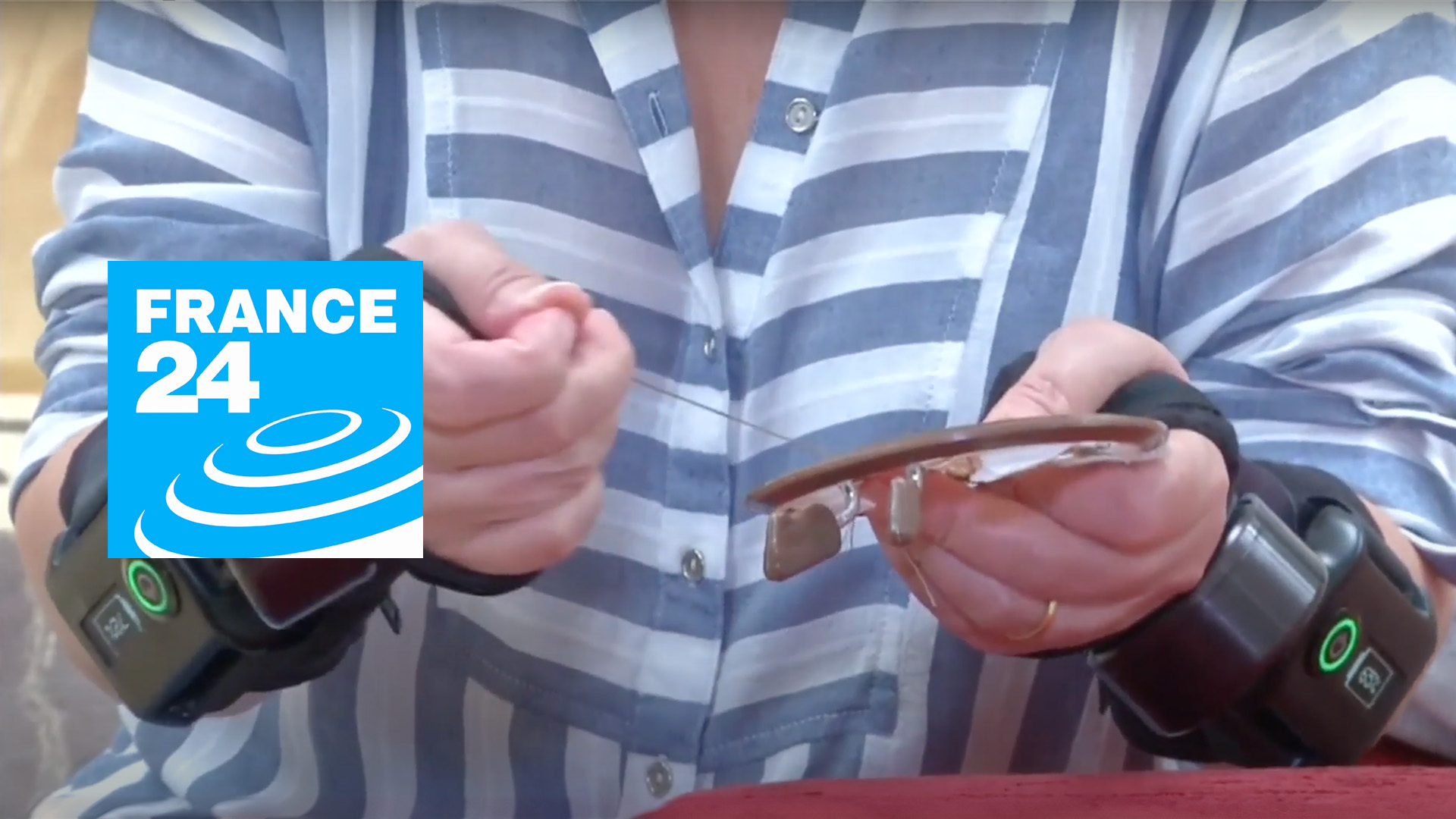



GyroGlove’s™ design is simple yet elegant. It uses a custom designed, dynamically adjustable gyroscope, which is enclosed in a light-weight casing and is affixed to the back of the hand, by a harness that is attached to the glove’s material.
When the device is switched on, the battery-powered gyroscope begins spinning, thereby pushing back against the wearer’s movements as the gyroscope tries to right itself. It instantaneously and proportionally resists a person’s hand movement, thereby dampening any tremors in the wearer’s hand.
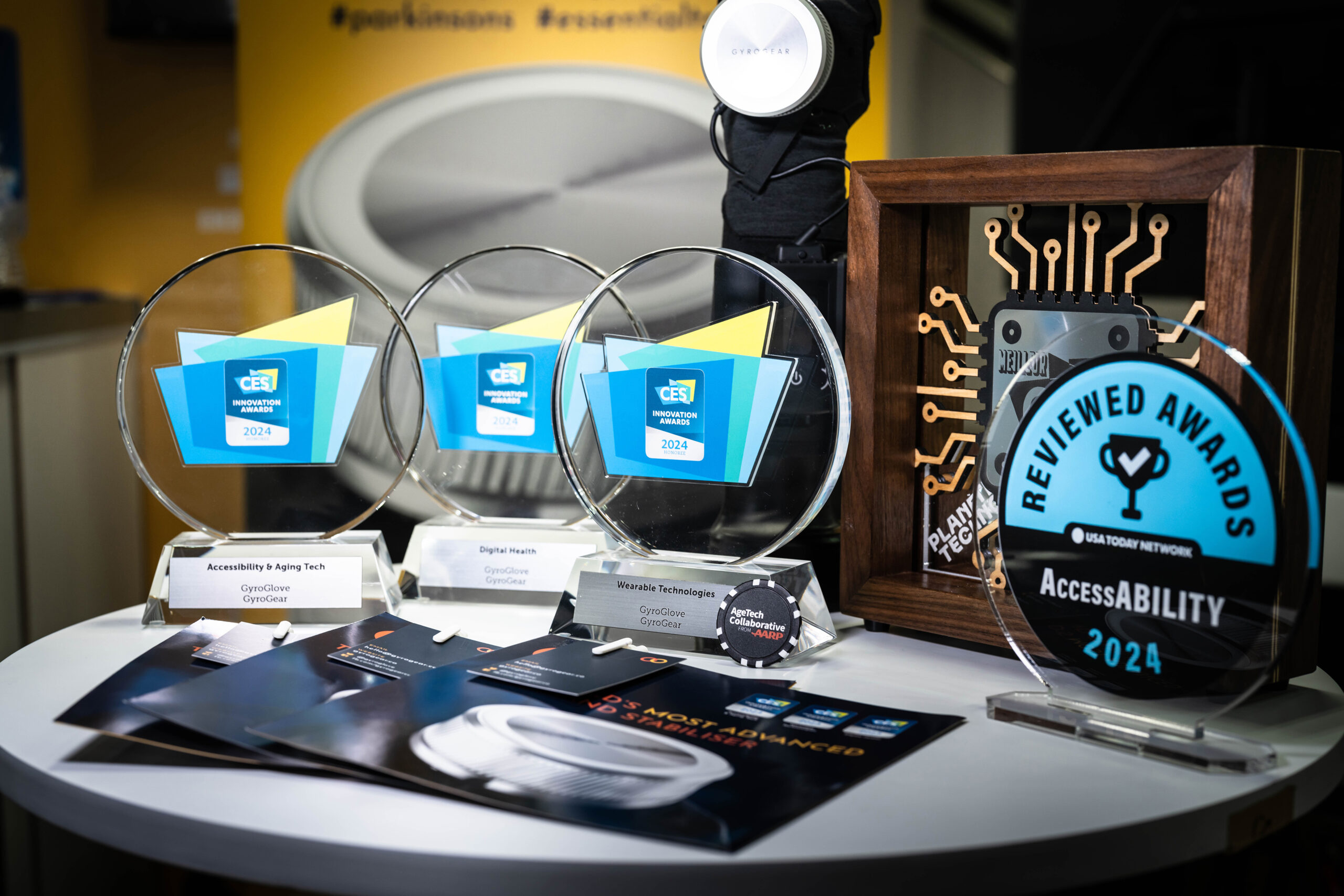
CES 2024 showcased 4300+ exhbitors, with 135,000+ attendees from 150 countries. Moreover, the CES 2024 Innovation Awards program
received 3000+ submissions, a record high, and included AI as a new category. Against this backdrop, GyroGear™ is exceptionally grateful for the recognition on multiple fronts:
The team also briefly hosted Microsoft CEO Satya Nadella as he sought to meet several medical startups of interest. Mr. Nadella touched on GyroGlove’s product availability, future pipeline and how GyroGear™ was implementing technologies of interest. The GyroGear™ team demonstrated how the GyroGlove™ was an absolute game changer to our volunteers with advanced Parkinson’s who were with us at CES.

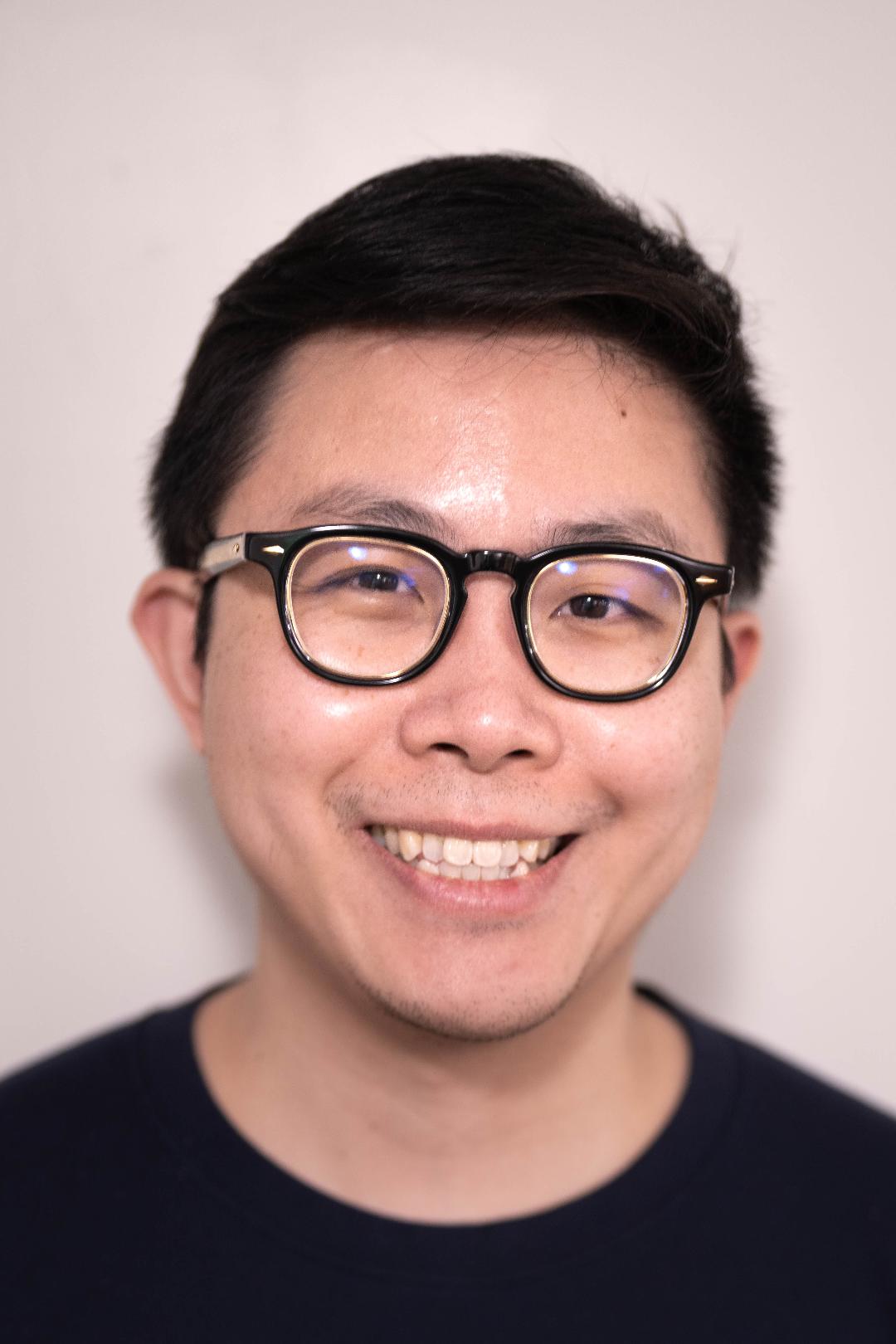
Inspired by a 103-year-old Parkinson’s patient’s struggles with feeding, Dr. Faii Ong, founder of GyroGear Ltd and inventor of GyroGlove™ was driven to develop a wearable technology for the 200 million people worldwide with hand tremors. Trained in medicine, science, and bioengineering, he earned his medical degree at Imperial College London and conducted research at Harvard Medical School and Harvard-MIT’s Health Science and Technology Division, focusing on medical devices, regenerative medicine, and stem cell therapy.